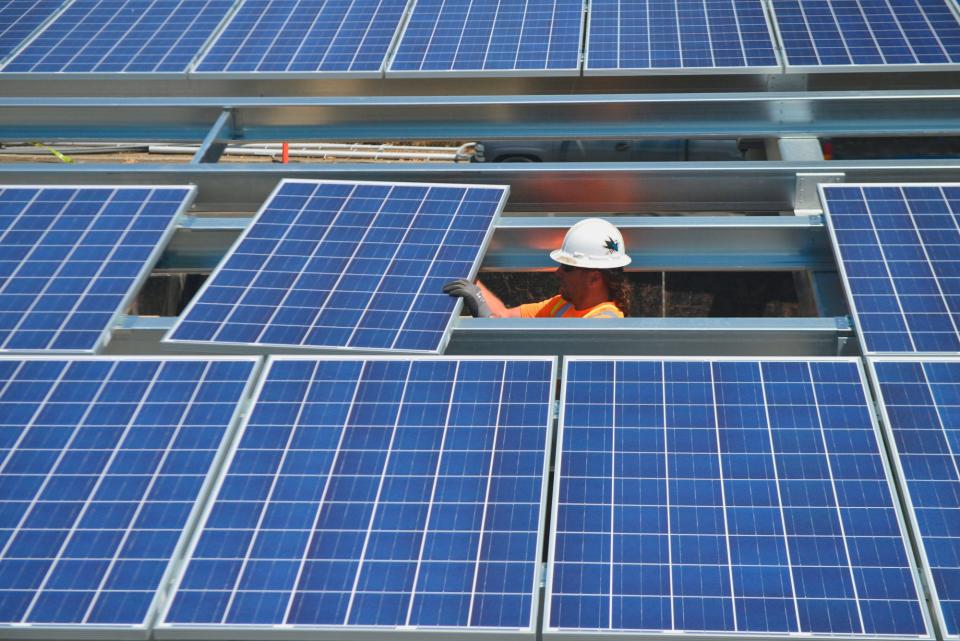California policy change may have led to Visalia solar firm closing, 46 jobs lost
Arguably a California Public Utilities Commission policy change on rooftop solar incentives for consumers has drastically cut the number of solar installations this year in the San Joaquin Valley and statewide.
That agency policy has apparently led to one solar company closure in Visalia in recent weeks.
This week, Kuubix, in concert with a public notice, said the company was shutting down and filed a WARN notice with the state that reported that the Visalia office was laying off 46 employees who had worked out of the company’s Sunnyview facility in the Visalia Industrial Park.
An answering machine at the Visalia location tells the same story. At least two other company offices closed in the state as well.
Renewable energy company Solegreen-based in Israel reported over the summer that it would consider the closure of its US subsidiary Kuubix Energy by the end of September, unless it found a buyer for the company. The latest negative development for Kuubix came last April when the CPUC made changes to policy that Kuubix claims resulted in a 60-70% decline in solar panel sales in the state. Indeed a look at the number of solar panels installed on rooftops in the four county region of the Central Valley from May through November showed a sharp drop compared to the same time a year before.
This year from May (after the CPUC changed policy) through November, the total number of panels installed in the region was 8,611 compared to 13,600 units, valued at $342 million over the same period in 2022, according to Construction Monitor. As for Kuubix, the company installed 264 panel projects in the Central Valley in 2022 compared to just 33 installations this year. The rooftop solar industry has many players including a large number of small companies although the market is dominated by one large company - SunRun with a majority market share. SunRun has a facility in Visalia Industrial Park.
California has the largest share of the country’s small-scale solar capacity, at 36%. Ample sunshine, favorable incentives, and relatively high retail electricity prices have encouraged rooftop solar adoption in California. California’s Net Energy Metering Program, NEM, allows rooftop solar panels to be connected to the power grid and provides credits for any surplus electricity produced by the panels and sent to the grid. Starting in 2020, California required newly built single-family homes and multi-family buildings up to three stories high to have solar panels installed.

California built the nation’s largest rooftop solar industry over the last decade.
"The NEM-driven market has become California’s No. 1 and fastest growing form of renewable energy,” said Bernadette Del Chiaro, executive director of the California Solar and Storage Association (CALSSA), a trade group representing residential installers.
As of April 15, though, policymakers drastically altered the NEM payment structure that created this clean energy industry and replaced it with a set of arguably complicated rules that created uncertainty. Californians adding solar to their roofs will earn far less for exported power — 75% less, on average.
That’s "because the value is now determined by a complex administrative metric that reflects the real-time supply-demand balance of the grid. This muddies both the incentive for would-be customers to invest in rooftop solar and the sales pitches that installers have relied on to close deals," says the association.
It’s not just in California where the rules have changed. About a dozen states have ended their net metering policies in the past decade, according to a report from the National Academy of Sciences released this summer. But the recent pullbacks are occurring in some of the largest solar states. Solar company bankruptcies have been seen across the country this year, likely as a result.
The changes could crimp new solar installations as the Biden administration seeks to harness the nation’s estimated 8 billion square meters of rooftop that could produce solar energy to cut carbon emissions and help families lower their electricity bills by producing power at home.
The federal government, though, continues to offer tax incentives that coupled with dropping prices of solar panels makes the technology attractive. The Inflation Reduction Act offers a 30 percent tax credit for solar systems installed through the end of 2032, with no maximum credit.
This article originally appeared on Visalia Times-Delta: California policy change may have led to Visalia solar firm closing

